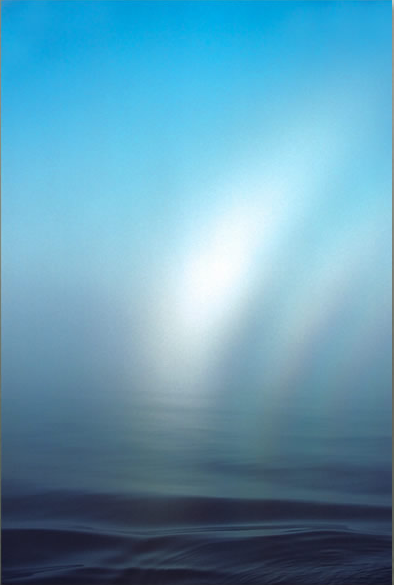Lake Ladoga Fogbow
Lake Ladoga Fogbow: A Natural Phenomenon in Northwestern Russia
The enchanting beauty of Lake Ladoga in Northwestern Russia is not only defined by its pristine waters and picturesque landscapes but also by a fascinating atmospheric optical phenomenon known as the fogbow. A fogbow is a spectral arc that appears in dense fog when sunlight is diffracted by tiny droplets of water suspended in the air. Unlike rainbows, which are created by large raindrops, fogbows are formed by the diffraction of sunlight through much smaller fog droplets.
The Fascinating Formation of a Fogbow
When the motorship voyagers embarked on their journey from St. Petersburg to Lake Ladoga and Valaam Islands, little did they know they would encounter a breathtaking natural spectacle. As they sailed through the tranquil waters, a dense fog began to envelop their surroundings, creating an ethereal wall between the bay and the lake. Venturing into the misty abyss, they found themselves immersed in an otherworldly experience where nothing but fog and water surrounded them. However, the true marvel of this voyage was yet to come—the appearance of the fogbow.
Unraveling the Mysteries of the Fogbow
The fogbow observed on Lake Ladoga exhibited distinct characteristics that distinguish it from other atmospheric optical phenomena. The widely spaced supernumeraries, which are additional faint arcs accompanying the primary bow, were more intensely colored than the main bow itself. Moreover, the colors of the supernumeraries were reversed when compared to those of a traditional rainbow.
The Historical Significance of Lake Ladoga
Lake Ladoga holds great historical significance, serving as a vital supply route during the Second World War to provide essential provisions to the besieged city of Leningrad (now St. Petersburg). In winter, convoys of lorries traversed the frozen lake, braving harsh conditions to deliver much-needed food and relief supplies to the city's inhabitants.
Tales of Norse Incursions and Russian Rulers
The region surrounding Lake Ladoga has a rich history intertwined with Norse incursions and the establishment of Russian dynasties. According to legend, in the year 862, the people of Novgorod sought the rule of Prince Rurik, a Varangian leader. Rurik's acceptance of their plea marked the beginning of the first Russian ruling dynasty, known as the Rurikids. Within two decades, the Rurikids expanded their dominion from Novgorod to Kiev, covering a vast territory of 800 miles to the south.
Appreciating Nature's Wonders
Encounters with awe-inspiring phenomena like the fogbow remind us of the intricate beauty that exists in our natural world. The interplay between sunlight and minuscule water droplets can create stunning displays that captivate our senses and ignite our curiosity. Exploring the ethereal realms of atmospheric optics opens up a realm of wonder and appreciation for the marvels that surround us, even in the most seemingly ordinary of environments.
Conclusion
Lake Ladoga's fogbow serves as a testament to the harmonious dance between light and water vapor. As sunlight interacts with the tiny fog droplets suspended in the air, a mystical arc emerges, painting the foggy canvas with its delicate hues. This captivating natural phenomenon invites us to embrace the beauty and complexity of our environment, urging us to pause and marvel at the wonders that lie just beyond our line of sight. Next time you find yourself in a misty landscape, keep an eye out for the elusive fogbow—a fleeting reminder of nature's artistic prowess.

Fogbow, Lake Ladoga, NW Russia pictured by Modest Ossipoff. ©Modest Ossipoff, shown with permission.
"We took a motorship voyage from St. Petersburg to Lake Ladoga and Valaam Islands in the late June of 2002. The motorship waits for tourists in a small isolated bay named Nikonovskaya. In the evening on the return voyage to St. Petersburg very dense fog literally formed a big wall between the bay and the lake. We entered the fog and it was very interesting and strange to be inside. There was nothing around us save fog and water. But the real treasure of that voyage was the fogbow!"
Fog droplets have diffracted direct sunlight to produce the fogbow, the small droplet analogue of large raindrop created rainbows. Fogbows have widely spaced supernumeraries that are more intensely coloured than the main primary bow, their colours are also reversed.
Lake Ladoga was a vital route to supply besieged Leningrad (St. Petersburg) in WW2. Winter lorry convoys drove over the frozen lake with food and relief supplies.
In earlier times the region was on the route of Norse incursions. In 862 the people of Novgorod appealed - it is said - to Prince Rurik of the Varangians (as the Norse were known) to rule them. Rurik became the founder of the first Russian ruling dynasty. Within 20 years the Rurikids governed a region reaching from Novgorod to Kiev 800 miles to the south - the 'Rus'.
Note: this article has been automatically converted from the old site and may not appear as intended. You can find the original article here.
Reference Atmospheric Optics
If you use any of the definitions, information, or data presented on Atmospheric Optics, please copy the link or reference below to properly credit us as the reference source. Thank you!
-
<a href="https://atoptics.co.uk/blog/lake-ladoga-fogbow/">Lake Ladoga Fogbow</a>
-
"Lake Ladoga Fogbow". Atmospheric Optics. Accessed on April 19, 2024. https://atoptics.co.uk/blog/lake-ladoga-fogbow/.
-
"Lake Ladoga Fogbow". Atmospheric Optics, https://atoptics.co.uk/blog/lake-ladoga-fogbow/. Accessed 19 April, 2024
-
Lake Ladoga Fogbow. Atmospheric Optics. Retrieved from https://atoptics.co.uk/blog/lake-ladoga-fogbow/.